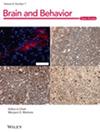Artificially Sweetened Food Mediates the Perception of Chronic Pain in Individuals With Neuroticism Traits: A Mendelian Randomization Study
Abstract
Background
Previous studies have shown that neuroticism and artificially sweetened food all play essential roles in chronic pain to varying degrees. However, it is unclear precisely the causal relationship between neuroticism traits and chronic pain and whether an unhealthy sweetened food is a mediator in this process.
Methods
This study employed rigorous research methods to ensure the validity of the findings. We utilized Mendelian randomization (MR) to examine the causal relationships between neuroticism traits, artificially sweetened food, and chronic pain. The data encompass four neuroticism traits (neuroticism, experiencing mood swings, depressed affect, and worry), consumption levels of nine artificially sweetened foods, and seven types of chronic pain. The primary statistical method employed was inverse variance weighting (IVW). Eventually, we explored whether artificially sweetened food serves as a mediator in the relationship between neuroticism traits and chronic pain.
Results
We found that genetic predisposition to higher neuroticism traits and the consumption of artificial sweeteners is associated with an increased risk of chronic pain across multiple sites. Reverse MR analysis also confirms that chronic pain at multiple sites similarly increases the risk of neuroticism traits. Two-step MR suggests the mediating effects of five artificial sweeteners on sciatica: low back pain, thoracic pain, low back pain, joint pain, and muscular pain. These findings could inform interventions and treatments for chronic pain.
Conclusion
Neuroticism traits and chronic pain have causal relationships, with artificially sweetened food mediating the pathway from neuroticism traits to chronic pain.


 求助内容:
求助内容: 应助结果提醒方式:
应助结果提醒方式:


